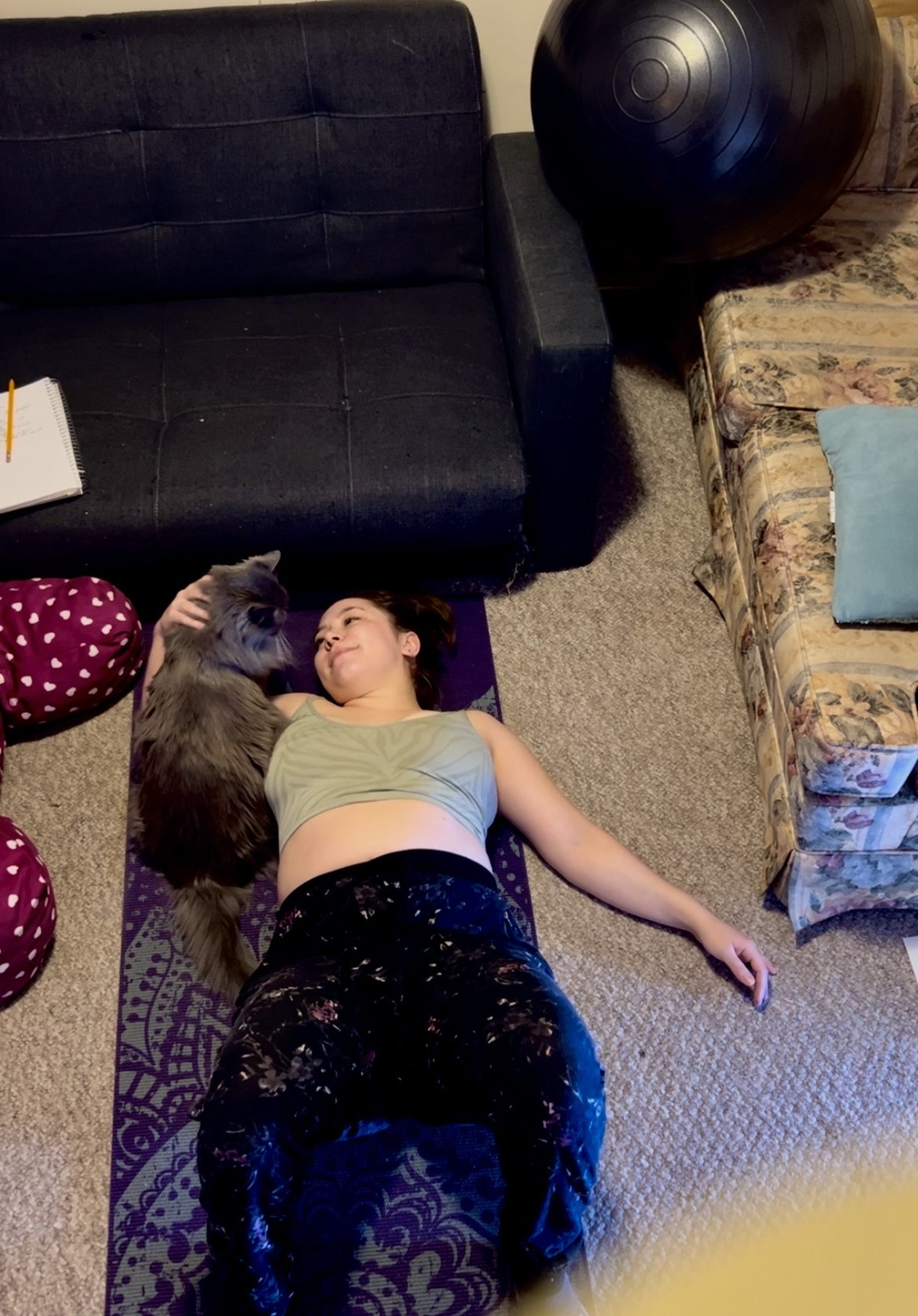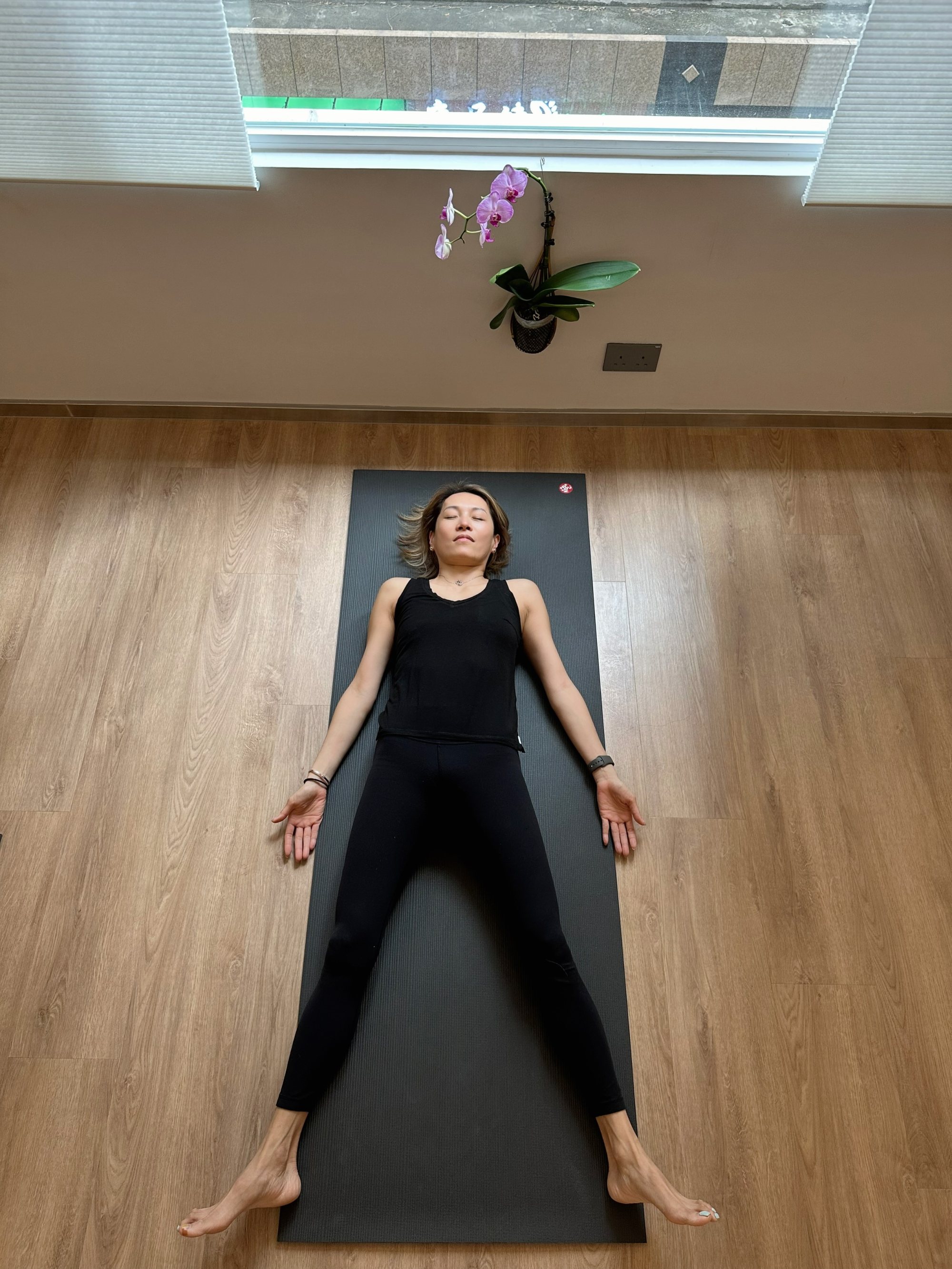“My two-year-old daughter joins me and it’s amazing to see her just be herself and enjoy that moment.”
Many people, like Christian, enjoy lying on the floor, whether to stretch, relieve aches and pains, calm themselves, do breathing exercises, or simply relax.
Just breathe: how doing it mindfully can relieve pain and anxiety
Just breathe: how doing it mindfully can relieve pain and anxiety
Instagram has hundreds of posts related to “floor breaks” or “floor time”– one from Canadian influencer Laura Whaley, whose handle is @loewhaley, attracted more than 359,800 likes. On TikTok, #floortime content has got more than 65 million views.
We spend most of our waking hours seated or standing, only being horizontal while asleep.
“Why don’t we take more floor breaks during the day, when we can spend eight hours a night lying in bed or (on) the floor in some cultures?” asks physiotherapist Angela Hiu Wai-leung, clinical director of the Prohealth Sports and Spinal Physiotherapy Centre in Hong Kong.
“It is important to regularly switch positions by standing, sitting, walking, and lying on the floor to avoid stress on our spine.”

Pain and anxiety management
In an Instagram post, Erin Fika, a massage therapist in Edmonton, Canada, can be seen lying on the floor. The caption says, “I’m a floor person. I love to dance and play and sit and observe on the floor.”
She finds lying still or moving on the floor helpful in managing the chronic pain and anxiety she has struggled with from a young age.
“Callisthenics, yoga, and strength training can all be done on the floor. The slow and gentle movements have helped me to learn my limits and release tension through movement,” says the 27-year-old.
Fika also meditates here, finding it easier to tune out busy thoughts and be more mindful while supine. She spends from 30 minutes to two hours daily on floor time, from exercising to holding a comfortable pose and deep breathing.

Relaxing shavasana
In yoga, shavasana, or the corpse pose, in which one lies flat on one’s back with arms and legs extended, is usually held at the end of a yoga session.
Shavasana affords deep relaxation and rejuvenation, and helps to integrate the benefits of the yoga practice for the body and mind, says Edith Chan, an independent yoga instructor at XYZ Wellness Studio in Hong Kong.
“In this pose, the body can release tension, calm the mind, and enter a state of deep relaxation,” she says.
Shavasana may lower blood pressure and improve overall well-being by shifting the nervous system into a more restful state, she adds.
The big risks of leaving high blood pressure untreated – doctors explain
The big risks of leaving high blood pressure untreated – doctors explain
Integrating body and mind
Psychotherapist Kunjal Shah, based in Mumbai, India, agrees that lying in this open position can be calming and rejuvenating. She uses body mindfulness exercises to help clients integrate new insights or learning while in shavasana.
“This works better when they are lying down, the open position making you more aware,” she says.

“Integration is that part of the therapy process where we spend time getting the brain, nervous system, and muscle to absorb the (lesson).”
Apart from therapy, Shah recommends lying on the ground and repeating an affirmation – a positive statement aimed at tapping into your conscious and subconscious mind to motivate you to reach your full potential – and letting the body and mind absorb the words.

Safe lying positions
Is there a recommended way to lie on the floor, or certain conditions for which it is unsuitable? Leung suggests two positions, depending on pre-existing conditions and what feels right.
Lying flat on the back with legs straight can help reduce the weight on the spine and pressure on the discs, and can be helpful for those who suffer from spinal disc injuries.
Here the lower back is in a neutral position, reducing muscle tension in the lower spine.
How to do Legs Up the Wall yoga pose to reduce stress and signs of ageing
How to do Legs Up the Wall yoga pose to reduce stress and signs of ageing
Shavasana is safe for most people, Chan says, but emphasises that those with severe back problems or injuries may need to avoid or modify this pose.
“It is always recommended to consult your doctor, therapist, or yoga instructor for individual needs,” she adds.
For the most part, lying on the floor is a relatively harmless relaxation practice, accessible to everyone.
Fika says: “I love having a natural and easily available option to deal with strong emotions and pain.”
